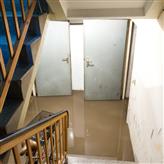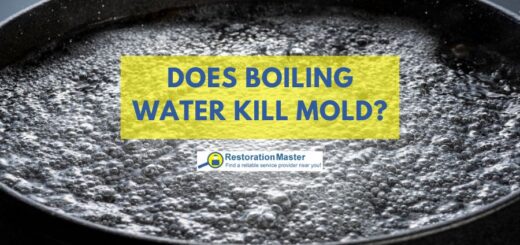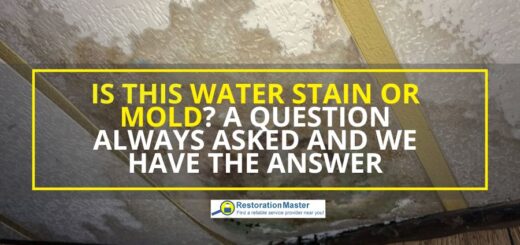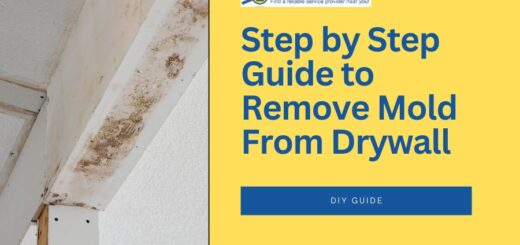Tips for Getting Rid of Musty Smells from Water Damage
If you ever notice a musty smell, it can be hard to concentrate on anything else but that horrible odorAn odor is a smell, often detectable by the human nose, whic... More. They can be described as stale, dank, earthy, and even moldy. But the worst part of it is that they are the first indicator of water damage and sometimes moldMold is a type of fungus that grows in damp or humid conditi... More.
Musty smells are most common in older homes because they can also come from decaying building materials. Depending on the case, it can also be unhealthy as the air contains moldMold is a type of fungus that grows in damp or humid conditi... More sporesSpores are microscopic reproductive units of fungi or mold t... More that can trigger allergies, asthma problems, and other health issues.
The worst part of it is that people who live in homes with these smells are used to it. But while they now may be impervious to it, they may have developed long term breathing difficulties.
So here are some tips on how to eliminate musty smells in your home from water damage, decay, moldMold is a type of fungus that grows in damp or humid conditi... More and other factors.
How to Get Rid of Musty Smells
1. Identify the source of the musty smell
Musty smells are often the first indicator of moldMold is a type of fungus that grows in damp or humid conditi... More and water damage. To start, look into dark, damp, and warm places like crawlspaces, attics, basement, and even your bathroom. MoldMold is a type of fungus that grows in damp or humid conditi... More will also thrive on porousPorous describes a material that contains small openings or ... More materials with excess moisture, such as wood, drywall, carpeting, cement, and sheet rock.
Another good idea would be to find the source of the moldMold is a type of fungus that grows in damp or humid conditi... More: most likely from water damage but what caused that? Sources like leaking pipes, appliances, roofing, cracks in the foundation, sewageSewage is wastewater containing biological and chemical cont... More backups, melting snow, etc. will all result in water damage and musty smells in the end.
2. Remove the source of the musty smell
The first step towards addressing musty smells is to remove the source that caused them. As soon as the leak is repaired, the crack is filled, or the appliance is fixed, the faster you can get rid of the smell. This will also prevent it from coming back in the future.
To be on the safe side, monitor the source if it was repaired, such as a pipe leak to prevent the same issue from happening again.
3. Dry out the affected area and remove damaged materials
Removing or repairing water-damaged materials can easily become difficult, especially if it involves physically challenging tasks, such as removing carpet, drywall, or large contents. But companies such as RestorationMaster specialize in water damage restoration. Their technicians will respond right away, remove the damaged materials, dry out the affected area, and of course, get rid of the musty smell.
But if the water damage hasn’t spread too far, just remove the damaged materials and repairRepair is the act of fixing or restoring damaged property, m... More the leak or have a licensed plumber take care of the work. Just make sure to wear clothing that will protect you from contact with moldMold is a type of fungus that grows in damp or humid conditi... More sporesSpores are microscopic reproductive units of fungi or mold t... More. Be sure to vacuum the area as soon as you are done.
4. Remove the Mold
Removing moldMold is a type of fungus that grows in damp or humid conditi... More can often be difficult. Generally, it is recommended to allow a professional mold remediationMold remediation is the process of identifying, removing, an... Moreremediation companyA remediation company is a business specializing in cleaning... More handle the job with professional products. This will ensure that all traces have been taken care of as well as the source has been removed.
But as long as you have caught the moldMold is a type of fungus that grows in damp or humid conditi... More in its early stages, you can remove it with bleach or vinegar. Just never forget to wear gloves and a breathing mask to avoid health issues during the cleaning process. Also be sure to clean all affected areas, ensuring to eliminate stains as well because there may be sporesSpores are microscopic reproductive units of fungi or mold t... More leftover. Finally, you will want to dry out the entire area as any remaining moisture may trigger the sporesSpores are microscopic reproductive units of fungi or mold t... More to develop again.
5. Ventilate and deodorize the area
After thoroughly cleaning out the area, air it out by setting up a space heater, box fan, or overhead fan. If the area is by a window or door and it’s not raining or humid outside, allow the breeze to circulate the room as well.
You can also add a natural air freshener by boiling lemons in a pan and leaving it in the affected room to air it out. Any fans in the room will help to spread the aroma by circulating the air. But if the area is not a place you can do this, you can also spritz the room with a home deodorizer, such as Lysol.
If the odorAn odor is a smell, often detectable by the human nose, whic... More still lingers, try adding a paste of baking soda and water and scrub the area thoroughly. Allow the area to dry again without rinsing the paste, then vacuum up the particles in a few hours. If the damage occurred on a wall, just remember to always wait until it has dried before trying to repairRepair is the act of fixing or restoring damaged property, m... More it.
Work with the Professionals
If the smell still persists or there is even a moldMold is a type of fungus that grows in damp or humid conditi... More infestation, don’t hesitate to call the professionals. Tackling a large area of moldMold is a type of fungus that grows in damp or humid conditi... More with home remedies can be extremely dangerous, even with protective equipment. The musty smells may simply be overpowering and will need powerful equipment, such as an ozone generator or hydroxyl machines.
A professional restoration company, such as RestorationMaster, would be able to repairRepair is the act of fixing or restoring damaged property, m... More the building materials from water damage. They can also take care of any moldMold is a type of fungus that grows in damp or humid conditi... More growth, eliminating it at the source and preventing it from returning in the future. With years of experience and training, they will not only be able to get rid of the musty smells but restore the affected area from water and moldMold is a type of fungus that grows in damp or humid conditi... More damage. After their services, you won’t have to worry about health issues or horrible stenches anymore. Don’t hesitate to give these professionals a call for a free estimate.












